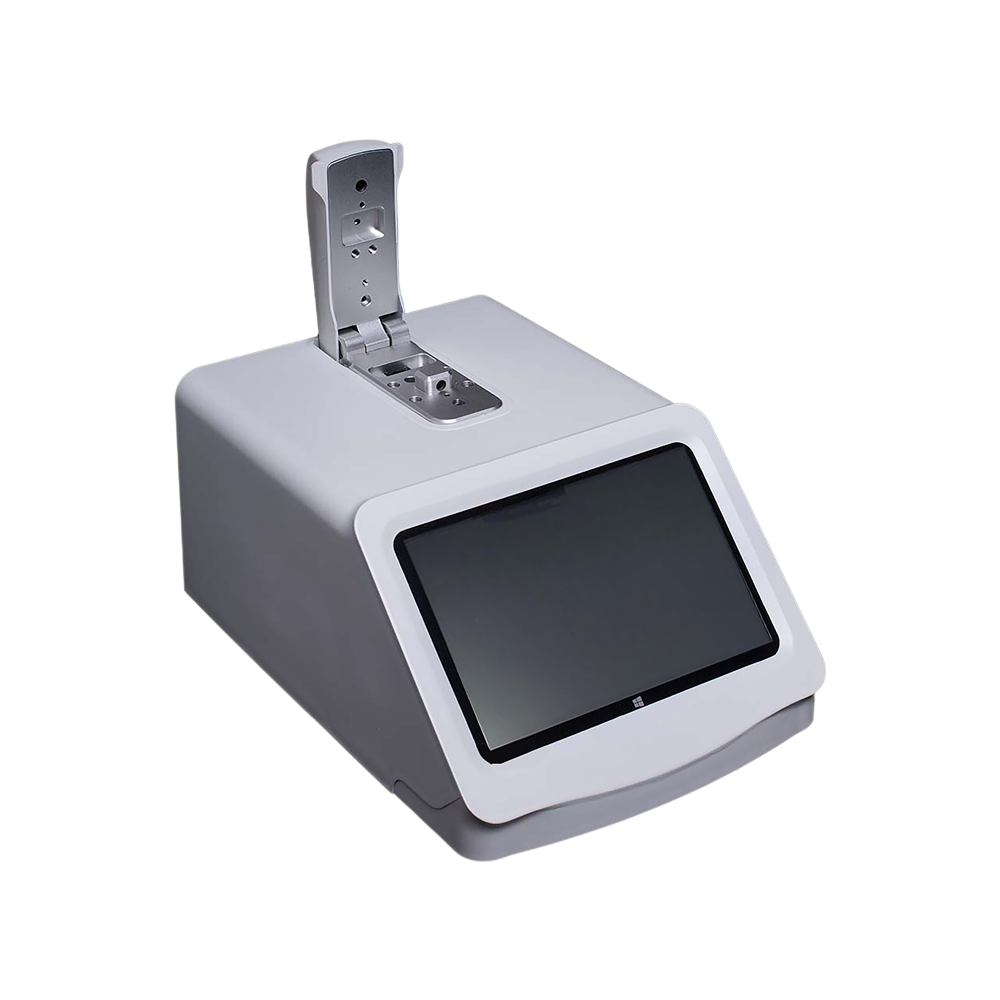Description :
Micro Spectrophotometer TRMS-604 works as a new type of full-wavelength spectrophotometer. With the mode of USB output or network transfer data, with an electronic manual. Delivers with a wavelength range of 190 to 850nm, with the accuracy of ± 1 nm. It uses a liquid column to recognize the irregular function. Device Platform designed with Stainless steel and quartz fiber, it outcomes with a Light source as long life pulsed xenon flash lamp.
Specification
| Wavelength Range |
190 to 850 nm |
| Wavelength Accuracy |
± 1 nm |
| Wavelength Resolution |
2 nm (FWHM at Hg 546 nm) |
| Repeatability |
<± 0.5 nm |
| Light Path |
1 mm, 0.05 mm (optical path automatic conversion) |
| Nucleic Acid measurement range |
0.2 to 37500 mg / μl (sa DNA) |
| Protein measurement range |
0.01 to 1120 mg / ml (BSA) |
| sample volume requirements |
0.3 to 2 μl |
| Absorbance Accuracy |
1% (0.76 absorbance at 350 nm) |
| Absorbance Range |
0.002 to 300 Abs (equivalent to 10mm path length) |
| Sample measurement time |
less than 3s |
| Sample base material |
stainless steel and quartz fiber |
| Light Source |
long life pulsed xenon flash lamp |
| Detector |
2048(CMOS) element linear silicide CCD array |
Features
- Users can accept measurement result data and custom methods directly in spreadsheet mode
- 32GB of storage space is pre-installed
- Integrated fibre to prevent fibre breakage due to external force collision, which results in hectic measurement results
- There is no need to warm up, start testing whenever you want
- Built-in Win10 system, built-in 7-inch high-definition display, full touch operation
- Stainless steel and quartz fibre used for the platform
- Using a liquid column to identify abnormal function
- The built-in Bluetooth and WIFI allow for remote operation and wireless printing of results
- Two USB ports can be connected to a variety of devices
Application
Nucleic acid, protein, bacteria, cell bacteria, microarray samples, and conventional full-wavelength scanning, among other things, can be detected.

